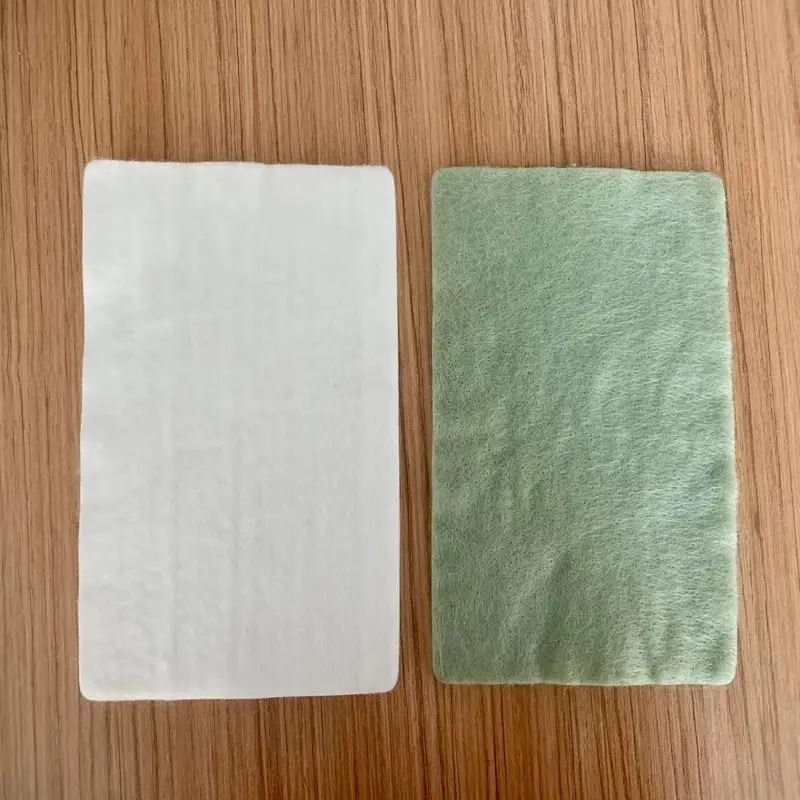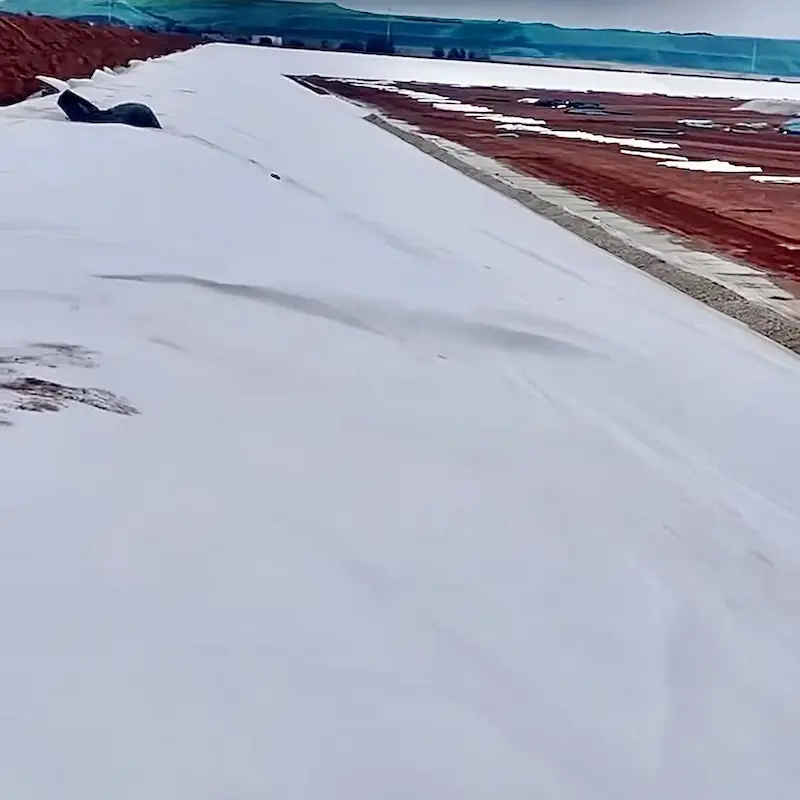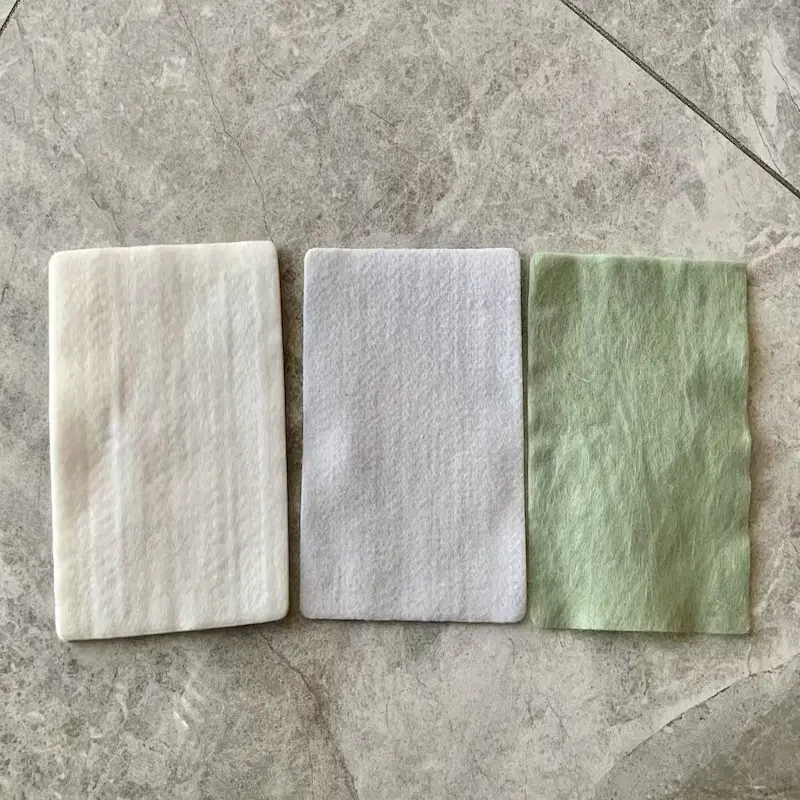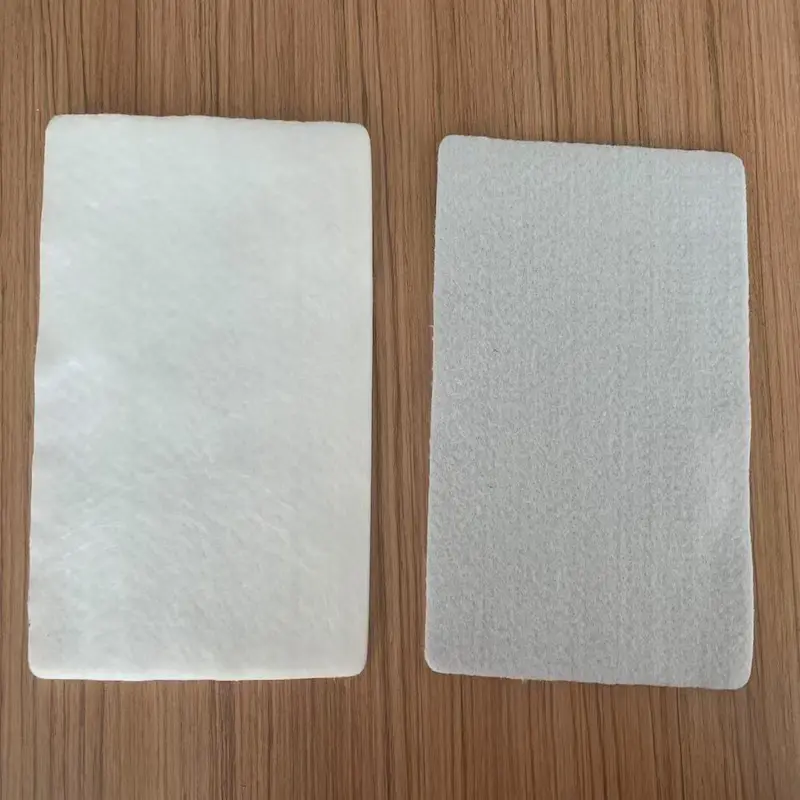What is Geotextile Fabric?
Geotextile fabric is a permeable textile material made from synthetic or natural fibers, used in a variety of civil engineering and environmental projects. It is primarily utilized for soil stabilization, filtration, drainage, and erosion control. Geotextiles are broadly classified into two main categories:
· Woven Geotextiles: Made by weaving fibers together, offering high tensile strength and commonly used for reinforcement and load distribution.
· Non-Woven Geotextiles: Manufactured by bonding fibers together through chemical, mechanical, or thermal processes, ideal for filtration and separation.
Types of Geotextile Fabrics and Their Pricing
Geotextile fabrics are classified into two main categories, each with distinct properties and applications.
Type | Material | Application | Price (THB per m²) |
Woven Geotextile | Polypropylene (PP)
| Road construction, embankments | 15 - 20 |
Non-Woven Geotextile | Polyester (PET) | Filtration, drainage, erosion control | 10 - 12 |
Woven Geotextile Fabrics
Woven geotextiles are manufactured by weaving polypropylene fibers to create a strong, tensile material. They are ideal for reinforcing roads and stabilizing embankments where load-bearing capacity is critical.
Typical Prices:
· 200 GSM woven geotextile: THB 15 per square meter
· 400 GSM woven geotextile: THB 20 per square meter
Non-Woven Geotextile Fabrics
Non-woven geotextiles are produced by bonding polyester or polypropylene fibers mechanically or chemically. They are commonly used for filtration and drainage systems, as well as in erosion control.
Typical Prices:
· 150 GSM non-woven geotextile: THB 10 per square meter
· 300 GSM non-woven geotextile: THB 12 per square meter
Factors Influencing Geotextile Fabric Prices in Thailand
Several factors affect the pricing of geotextile fabrics in the Thai market. Understanding these variables helps in optimizing costs and choosing the right material for your project.
1. Material Composition
Polypropylene (PP) and polyester (PET) are the most common materials used. Woven geotextiles, made from PP, are generally more expensive due to their higher tensile strength compared to non-woven alternatives.
2. Fabric Weight (GSM)
GSM (grams per square meter) is a key determinant of price. Heavier fabrics are thicker, stronger, and more costly. For example:
· 150 GSM non-woven geotextile is priced at THB 10/m²
· 300 GSM non-woven geotextile costs around THB 12/m²
3. Order Volume
Bulk purchases significantly reduce per-unit costs. Many suppliers offer discounts for large orders starting from 1,000 square meters and above.
4. Special Treatments
Geotextiles with additional properties like UV resistance or enhanced permeability may come with higher price tags due to specialized manufacturing processes.

Major Suppliers and Market Trends in Thailand
The geotextile market in Thailand is served by a mix of local and international suppliers. Some prominent players include:
Supplier` | Specialty |
Thai Geosynthetics Co. Ltd | Woven and non-woven geotextiles |
Giant KingKong Industries | Non-woven geotextiles for landscaping |
Geotech Thailand | Custom geotextile solutions |
These companies provide a range of products catering to different engineering applications, from soil stabilization to water filtration systems.
Geotextile Fabric Applications and Cost Implications
Thailand’s expanding infrastructure projects increasingly rely on geotextiles for their cost-saving and performance-enhancing benefits.
Application | Type of Geotextile | Cost Implications |
Road Construction | Woven | Prevents aggregate-subgrade mixing, reducing maintenance costs |
Drainage Systems | Non-woven | Filters water, minimizes soil clogging |
Erosion Control | Non-woven | Stabilizes slopes, prevents soil loss |
Landfill Barriers | Non-woven | Acts as a filtration and separation layer |
For example, using a 300 GSM non-woven geotextile at THB 12 per square meter in a 1,000-square-meter drainage system would cost THB 12,000. While the upfront expense adds to project costs, the long-term savings from reduced erosion and maintenance often outweigh the initial investment.
Comparing Local vs. Imported Geotextiles
Thailand’s geotextile industry offers competitive local options, though imported fabrics from countries like China and Malaysia also hold a significant market share.
Local Advantages:
· Shorter lead times
· Customizable solutions
Imported Options:
· Potentially lower prices for bulk orders
· A wider variety of specialized fabrics
Price Trends and Future Outlook
As demand for geotextile fabrics continues to grow in Thailand, market competition and technological advancements are driving prices downward. Sustainable construction practices and government infrastructure projects will likely sustain this trend. Buyers can expect:
· Increased availability of eco-friendly geotextiles
· Competitive pricing from both local and global suppliers
Benefits of Using Geotextile Fabric
· Cost Efficiency: Geotextiles reduce long-term maintenance costs by enhancing structural durability and minimizing repairs.
· Environmental Protection: The use of geotextiles prevents soil erosion, protects water bodies from sedimentation, and supports sustainable construction practices.
· Enhanced Performance: Geotextiles improve the load-bearing capacity of soil, making infrastructure projects more resilient.
· Versatility: They are suitable for various terrains and can be customized to meet project-specific requirements.
Applications of Geotextile Fabric in Thailand

1. Road Construction and Maintenance: Geotextiles are extensively used in Thailand’s road construction projects to enhance road longevity by improving subgrade stability and preventing soil erosion. They act as a separation layer between different soil layers, distributing loads evenly and reducing rutting.
2. Flood Control and Drainage Systems: Given Thailand’s vulnerability to seasonal flooding, geotextile fabrics are crucial for flood mitigation projects. They are used in drainage applications to improve water flow while preventing soil particles from clogging drainage systems.
3. Coastal and Riverbank Protection: To combat erosion along Thailand’s coastlines and riverbanks, geotextiles are applied as part of reinforced structures that stabilize embankments and protect against wave and water erosion.
4. Landfills and Waste Management: Geotextiles are employed as liners in landfill construction to separate waste layers, manage leachate drainage, and prevent soil contamination.
5. Agricultural Applications: In Thailand’s agricultural sector, geotextiles are used to improve water retention in soil, support crop growth, and manage irrigation systems effectively.
Tips for Buying Geotextile Fabric Cost-Effectively
1. Compare Multiple Suppliers: Obtain quotes from various local and international suppliers to find the best deal.
2. Buy in Bulk: Purchasing larger quantities often reduces the per-unit cost.
3. Consider Local Manufacturers: Domestic products may offer a better balance of price and quality, with reduced shipping costs.
4. Check Certifications: Ensure that the geotextile fabric meets relevant industry standards to avoid quality issues.
Conclusion
Geotextile fabric is a cost-effective, durable solution that enhances the performance and longevity of infrastructure projects in Thailand. By understanding the types, applications, and pricing factors, project planners can make informed choices to optimize budgets while achieving sustainable results. With prices ranging from THB 10 to THB 20 per square meter, geotextiles offer versatile solutions across roadways, drainage, and erosion control applications.


897.webp)
942.webp)
237.webp)